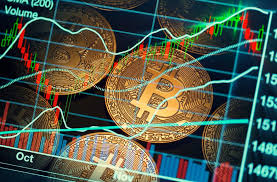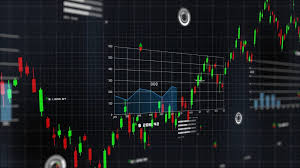
Exploring the Latest Crypto Trading Trends: Insights and Predictions
The crypto trading landscape is constantly evolving, influenced by technological advancements, regulatory changes, and market demand. In this article, we will explore the latest Crypto Trading Trends visit website trends in crypto trading, providing insights and predictions that can help both new and seasoned investors navigate this volatile environment.
Understanding the Current Market Dynamics
As the global market continues to grapple with inflation, economic uncertainty, and geopolitical tensions, the appeal of cryptocurrencies remains strong. In 2023, we observed a surge in institutional investments, with more hedge funds and corporations diversifying their portfolios to include digital assets. The notion of crypto as „digital gold“ becomes increasingly popular, especially amid growing concerns about fiat currency stability.
The Rise of Decentralized Finance (DeFi)
One of the most significant trends in crypto trading has been the rise of decentralized finance (DeFi). This innovative approach allows users to engage in financial activities—such as lending, borrowing, and trading—without the need for traditional intermediaries like banks. DeFi platforms offer various yield farming options, allowing investors to earn returns on their crypto holdings, and have contributed to the proliferation of liquidity in the market. However, while DeFi presents substantial opportunities, it also comes with risks, including smart contract vulnerabilities.

Non-Fungible Tokens (NFTs) and Their Impact on Trading Culture
While NFTs were once seen as a niche segment of the crypto market, their influence has expanded significantly. In 2023, they became a cultural phenomenon, with various industries—from art to music and gaming—leveraging NFTs for monetization and fan engagement. The integration of NFTs into mainstream platforms and the acceptance by high-profile brands have transformed them into assets worth trading. The evolving landscape of NFTs has also changed trading culture, introducing concepts like fractional ownership and community-driven development.
The Exchange Landscape: Centralized vs. Decentralized Exchanges
As the crypto market matures, the debate between centralized exchanges (CEXs) and decentralized exchanges (DEXs) continues. Centralized exchanges like Binance and Coinbase have remained popular due to their user-friendly interfaces, security measures, and liquidity. However, DEXs have gained traction, driven by the increasing demand for privacy, control over assets, and trustlessness. In 2023, we witnessed significant advancements in DEX technology, with improved trading mechanisms and reduced slippage, attracting more users to the decentralized model.
Technological Innovations Driving Crypto Trading
Technological advancements play a pivotal role in shaping trading trends. The integration of artificial intelligence (AI) and machine learning into trading strategies has enabled traders to analyze vast amounts of data more efficiently, gaining insights that were previously hard to obtain. Algorithmic trading has become more prevalent, allowing traders to execute strategies based on predefined criteria without emotional bias. Additionally, the development of Layer 2 solutions aims to improve transaction speed and reduce fees, making trading more accessible to the average investor.
Regulatory Landscape and Its Influence on Market Trends

The fluctuating regulatory environment remains a crucial factor influencing crypto trading trends. Governments around the world grapple with establishing frameworks that protect investors while nurturing innovation. In 2023, heightened scrutiny on exchanges and crypto projects by regulators has led to increased compliance requirements. These measures are expected to bring legitimacy to the market but may also create challenges for smaller projects and exchanges that struggle to meet stringent standards.
Investment Strategies for Current Market Conditions
Given the volatility and rapid changes in the crypto market, adopting flexible and informed trading strategies is essential. Long-term investors might consider dollar-cost averaging (DCA) to mitigate the impact of price volatility, while day traders may focus on technical analysis and market sentiment. Diversification across different cryptocurrencies can also help spread risk.
.
Additionally, staying updated on market news and adopting a cautious approach to new projects, especially amidst the speculative behavior seen in the NFT and DeFi spaces, is vital for sustaining investments.
Future Predictions: What Lies Ahead?
As we look ahead, several trends are likely to shape the future of crypto trading. The growing adoption of cryptocurrencies by traditional financial institutions and payment processors could lead to increased legitimacy and adoption rates among the general public. Furthermore, as blockchain technology evolves, we can expect innovations that improve scalability and interoperability, paving the way for more integrated financial systems.
Moreover, the increasing importance of environmental sustainability in crypto mining and transactions may spur the development of eco-friendly solutions, influencing trading practices as consumers increasingly prefer greener options.
Conclusion
In summary, the landscape of crypto trading is intricate and multifaceted, continuously adapting to technological advancements, regulatory shifts, and market dynamics. Staying informed about the latest trends and adopting sound investment strategies will empower traders to navigate this ever-changing environment effectively. As with any investment, exercising due diligence while keeping an eye on emerging opportunities is crucial for success in the world of crypto trading.


